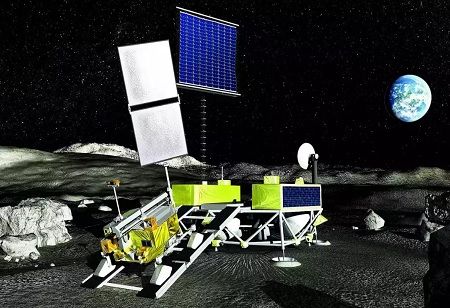
National Space Commission Approves India's 5th Lunar Mission 'Lupex'

 Under the Chandrayaan-3 mission, India's fifth lunar mission, Lunar Polar Exploration Mission (Lupex), has been sanctioned by the National Space Commission as a project of the Indian Space Research Organization and Japan Aerospace Exploration Agency. The ambitious project is meant to explore water and other vital resources on the Moon.
Under the Chandrayaan-3 mission, India's fifth lunar mission, Lunar Polar Exploration Mission (Lupex), has been sanctioned by the National Space Commission as a project of the Indian Space Research Organization and Japan Aerospace Exploration Agency. The ambitious project is meant to explore water and other vital resources on the Moon.
This is all part of a much larger plan through which India plans to send an astronaut to the Moon and bring him back safely. The operational period on the lunar surface is expected to be up to 100 days, much more than the 20 days expected for Chandrayaan-3.
Logistically, the manufacture of the Lupex rover and rocket will be the responsibility of Japan's space agency, JAXA, while the Indian side-ISRO-is to develop the lander system. Importantly, the Lupex rover weighs some 350 kg-about 20 times more than the 26-kg Pragyan rover used in Chandrayaan-3.
The mission will focus on the south pole of the Moon, landing at 90-degree latitude where it will examine the presence of water and other essential products. The Indo-Japanese collaboration will focus on both the quantity as well as the distribution of water, both on the surface of the lunar body and beneath it. In addition, Lupex will examine how water interacts with dry regolith; that is, the layers of loose rock and dust at the Moon's surface.
Lupex will investigate permanently shadowed regions of the Moon, referred to as the dark side, through drilling and in situ experiments to retrieve valuable information. That mission will set the foundation for sampling missions and pave the way for human landing on the lunar surface by 2040.
India and Japan have proved themselves to be the forerunners in lunar exploration recently. In August 2023, India made history by becoming the fourth nation to land on the Moon through the successful landing of Chandrayaan-3, while Japan followed suit by making its Smart Lander for Investigating Moon, or SLIM, the fifth country to land on the lunar surface, in January 2024.